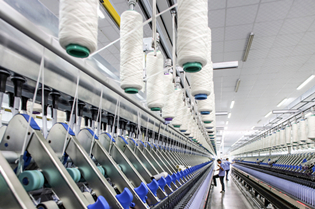New start for Inner Mongolia’s dairy industry
As the development strategy of the Inner Mongolia autonomous region has mapped out Inner Mongolia into a base of green agricultural and livestock products production, processing and export, the region’s dairy industry has seen a new start.
A household pasture’s development
Chang Yanfeng is a rancher in Helinge’er county, North China’s Inner Mongolia autonomous region. Her pasture, Tianyi, has developed from a size of only three cows to 300 in only 14 years. She is also a cooperator of Inner Mongolia Yili Industrial Group, a dairy giant in China.
Chang feels her pasture’s survival in the dairy industry is due to her close adherence of governmental policies. As Yili’s cooperator, Tianyi has been benefiting from Yili’s technological instructions and fund support. Chang is very confident in the pasture’s future based on her cooperation with Yili.
Intensive farming triggers industrial reforming
Actually, Tianyi’s development is a miniature of the dairy industry’s source control. witnessed the dairy industry developed into large-scale farming for milk source control, It is an inevitable choice for the dairy industry to develop into large-scale farming in order to gurantee milk source. The 2008 milk scandal hurt the Chinese dairy industry. However, it also spurred a quality-oriented development path. In order to speed up the dairy industry’s upgrade, Inner Mongolia proposed large-scale and standardized farming of cows so as to guarantee milk sources.
A pasture of Inner Mongolia Dairy United Sci-Tech Co, Lancan Pasture is located in Tumd Left Banner of Hohhot. Established in 2010, safety management and scientific farming concepts have been well implemented in the newly established pasture.
As intensive and standardized farming continues, milk quality keeps improving. But farming and labor costs have grown as well. On the other hand, the domestic dairy industry has also been impacted by foreign dairy. The opportunity coexists with risk and pressure in the dairy industry, according to Meng Jun, head of Lancan Pasture.
Therefore, in order to control risk and cost, many pastures have their own silage corn farms or have signed production contracts with farmers. As a result, it not only saves cost but also helps drive agriculture development to the surrounding area.
There were more than 300 milk stations in Tumd Left Banner, without large-scale pastures, before 2009. Thanks to the preferential policies on scientific and intensive farming, more and more large-scale pastures are growing, which is a development trend in the cow farming industry.
At the end of 2013, large-scale farming accounted for 85 percent in the banner. In addition to large-scale production, the establishment of the traceability system was an effective guarantee for dairy product safety.



 Print
Print Mail
Mail





